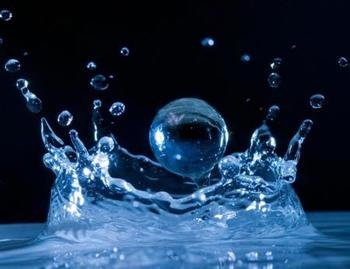Why is Water Quality So Important in Sterile Processing? (Rose Seavey, 2014)
Water quality is an important consideration in all stages of medical device reprocessing.
1,2,3. The principal objective of medical device reprocessing is to ensure that a device is safe for patient use and does not cause an adverse event in the patient.
What does water quality mean? The Association for the Advancement of Medical Instrumentation's (AAMI) TIR34 Water for the reprocessing of medical devices, defines water quality as the descriptor of the levels of various impurities present in water. Initial rinsing with tap water is suggested, but final rinsing of cleaned medical devices may require treated water that meets more stringent criteria for ions, microorganisms, organics, and dissolved solutes. Therefore, it is extremely important for healthcare facility to use some kind of treated water for medical device reprocessing.
Water treatment includes a collection of water purification devices and associated piping, pumps, valves, and gauges that together produce purified water of a specified quality and deliver it to the point of use. Water purity is an indication of the extent to which impurities (e.g., dissolved organic and inorganic solids and microbial contaminants, ionic, and chemical) have been removed. "The overall goals of water treatment in medical device reprocessing are to prolong the life of medical instrumentation, to ensure effectively functioning instrumentation, and, more importantly, to help minimize the risk of adverse patient outcomes arising from contaminated medical devices."1
Adverse patient events to which insufficient water quality can contribute include:
- Instrument malfunction during a procedure (e.g., corrosion of a surgical instrument because of salt or other water deposits; mechanical movement of the device could be obstructed by residual debris due to inactivation of the detergent by water of improper quality),
- Toxic effects and tissue irritations results from residuals on a device or implant (e.g., pyrogenic reactions could occur as a result of high levels of endotoxin),
- Patient infection resulting from the use of contaminated devices (e.g., salt or organic deposits from the water could inactivate the disinfectant or sterilant or could protect microorganisms from the disinfection or sterilization process),
- Ineffective cleaning/disinfection due to chemical integration with water contaminants. Water contaminants can bind with the detergent surfaces, and
- Noncondensable gasses (NCGs), can lead to inconsistencies in the performance of the sterilizer and Bowie-Dick test results.1
It is important that Sterile Processing personnel understand the water quality issues that can contribute to adverse patient events and be aware of some of the gross indicators that suggest that there may be problems with the water quality. Monitoring water quality is a process meant to confirm that control strategies are working properly.
Monitoring is not a process to prevent biofilm development but rather to indicate when control strategies may require review or corrective action. Inadequate water quality could contribute to residue left on a scope (e.g., film on a scope that adversely affects lens optics).
In the preparation of water for use in medical device reprocessing, two general characteristics need to be considered:
- the microbial level in water, and
- the inorganic, and organic components of water.
Ensuring adequate water quality in device reprocessing requires collaboration between the personnel who reprocess medical devices and the personnel who establish and maintain the water treatment system. AAMI TIR 34 provides guidance for personnel involved in medical device reprocessing on the selection of the recommended water quality for each stage of medical device reprocessing for each category of medical device. It also includes annexes that provide technical information to water maintenance personnel (i.e., personnel who are involved in water treatment and distribution in the facility) to guide them in setting up and monitoring water treatment systems.
Reference:
1. AAMI TIR34R/FDT/2014-04-14 Water for the reprocessing of medical devices
2. Recommended Practices for Sterilization. In: Perioperative Standards and Recommended Practices. Denver, CO: AORN, Inc; 2014
3. ST79 - Comprehensive guide to steam sterilization and sterility assurance in health care facilities, ANSI/AAMI ST79:2010 & A1:2010 & A2:2011 & A3:2012 & A4:2013

Rose Seavey MBA, BS, RN, CNOR, CRCST, CSPDT
President/CEO Seavey Healthcare Consulting, LLC


